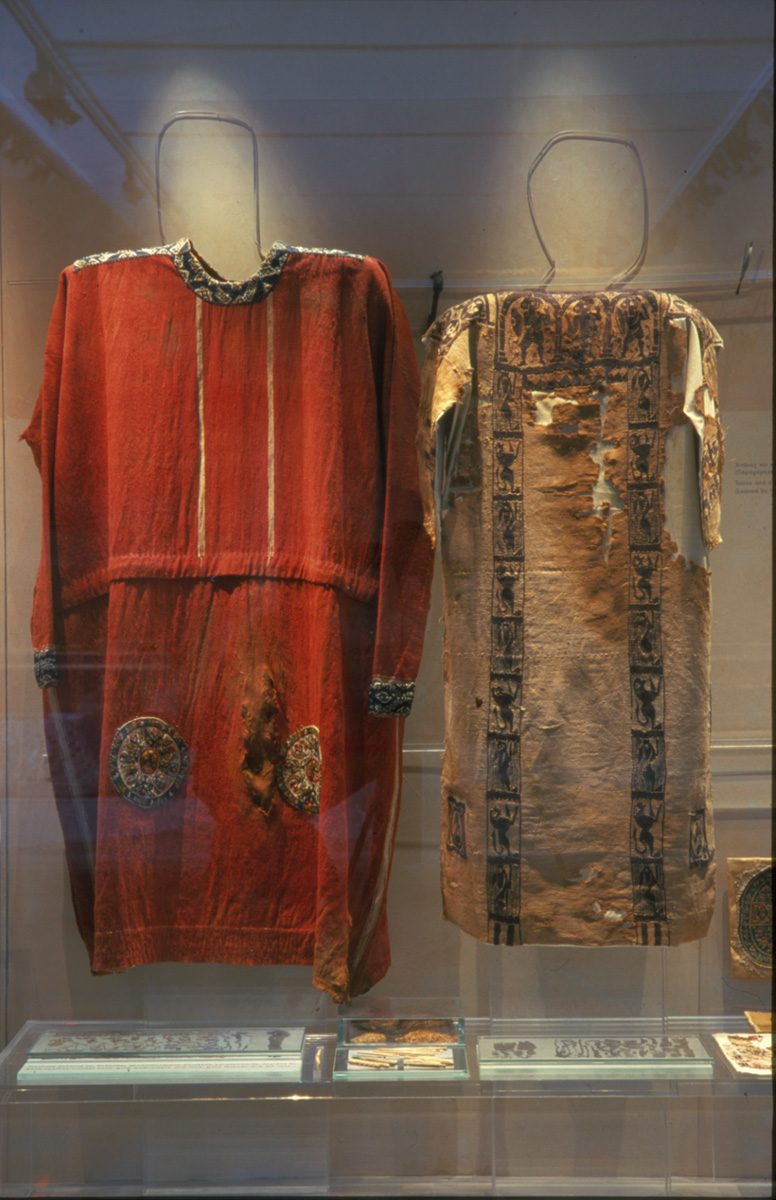
COLLECTIONS / Best of Museum
Tunic
Linen whitish tunic with sleeves. It has a woollen, woven decoration of brown colour – perhaps the original colour was red – at the height of the neck and of the shoulders, on the sleeves, at the height of the knees, but also two decorative bands (lat. clavi), which start at the chest level and end at the edge of the garment.
Tunics were the most popular garment in the area of the Eastern Mediterranean in late antiquity and were made of linen or wool. Garments until the Early Christian era had no sewing and were worn with the help of belts, buckles and pins. Cutting and sewing are practices which experienced wider spread in the Mediterranean area after the 7th century.
Code
ΣΔ 1/21
Type
Tunic
Chronology
5th-7th c.
Dimensions
Height 193 cm; width 111 cm
Material of Construction
Linen, wool



